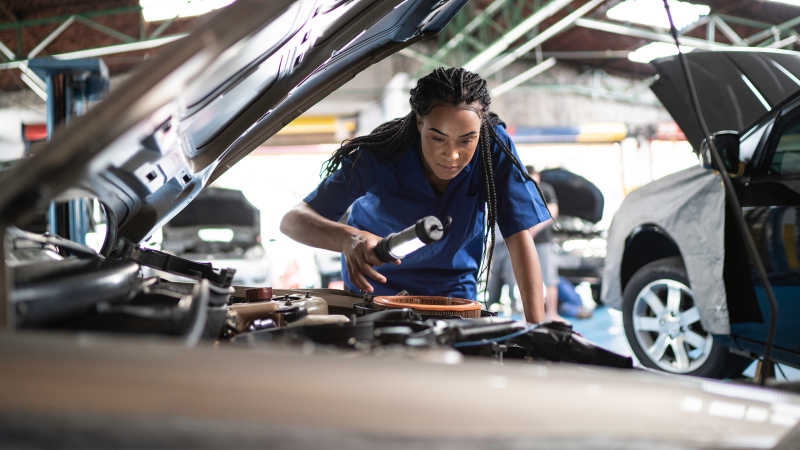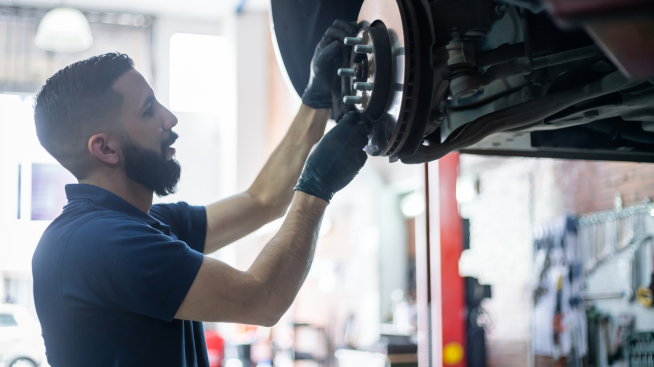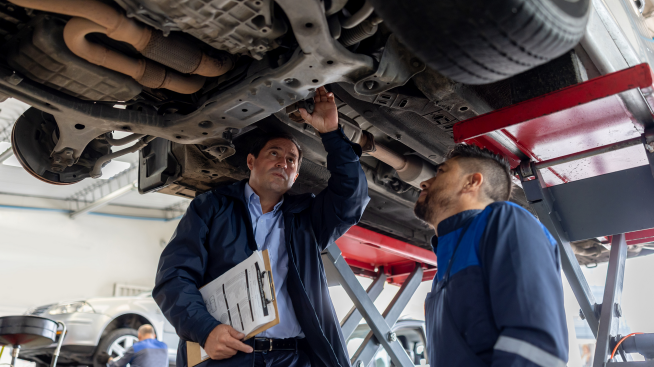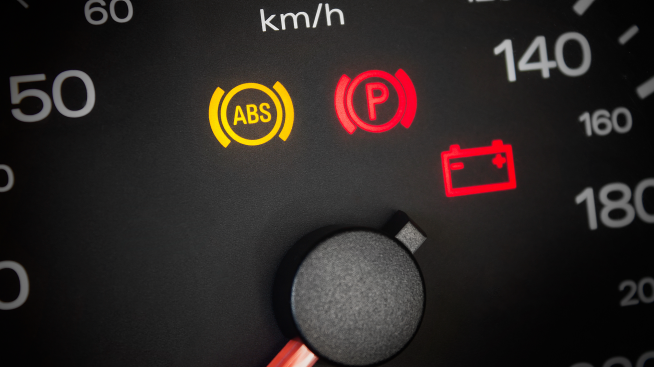What is checked during a car inspection?

Owning a car can feel empowering, but with that power comes responsibility. One of the recurring responsibilities many car owners have is getting their car inspected. But what exactly gets checked during a car inspection, and how does it help drivers stay safe?
What is a car inspection?
A car inspection typically comprises a series of checks on the overall condition of your car. Many states require drivers to get their cars inspected regularly (typically annually). This schedule helps ensure that all cars on the road are properly maintained and adhere to general safety standards.
Inspections can also help drivers detect potential problems before they become more serious. You could say that a car inspection is like an annual physical with your doctor. Just as there are several parts to your checkup at the doctor, there are also several stages to a car inspection.
1. Exterior car inspection
Car inspections are usually performed by mechanics. Some states, however, require that mechanics be certified to provide specific inspection services. Your local Department of Motor Vehicles (DMV) can tell you more about the requirements for your state.
There’s no set order for conducting an inspection, and criteria can vary from state to state, but the exterior of the car is often a natural starting point. Here are some of the exterior features commonly checked during a vehicle inspection:
Lights and reflectors
The ability to see the road at night is a critical element of driver safety, as is being able to indicate when you’re stopping or turning. Most vehicle inspections will examine the condition of your headlights, taillights, hazard lights, turn signals, brake lights and license plate lights. All of these must be bright enough to be visible and function as intended.
Windshield
The view from your windshield needs to be unobstructed. Most inspections will check for chips, cracks or scratches that could become a bigger problem down the line.
Wipers
Windshield wipers play a big role in making sure you have a clear view through your windshield. Working wipers should keep the windshield clear and avoid streaking. A vehicle typically won’t pass inspection without wipers.
Mirrors
Rear and side-view mirrors let drivers see what’s coming up behind them. Without them, a routine lane change could be dangerous. As such, the rearview mirror and both side-view mirrors need to be present and in good working condition to pass an inspection.
Body damage
Minor dings and dents aren’t typically counted against you in a vehicle inspection. If the damage is extensive enough, however, it may become a potential obstacle to passing.
2. Interior car inspection
Mechanics will often enter the car during a vehicle inspection. Here’s what’s typically checked in the interior of a car:
Seatbelts
National Highway Traffic Safety Administration (NHTSA) data shows that wearing your seatbelt significantly reduces the risk of serious or fatal injury in the event of an accident. In order to pass this point of inspection, your seatbelts must be easily accessible and in good condition. The locking and retraction mechanisms must also work as intended.
Steering wheel and column
Technicians will inspect your steering wheel and the general alignment of your steering column. Steering failure while turning can be extremely dangerous, so any worn parts or misalignment will likely need repairs to pass inspections.
Airbags
An interior inspection may also examine the front and side airbags to ensure they’ll still deploy in the event of a collision.
3. Mechanical car inspection
Another crucial stage of most inspections is checking up on the mechanical components of the car, such as the engine and transmission. Here are some of the things typically checked at this stage:
Engine
Your engine is the heart of your car. It's what makes everything go, so it warrants regular checkups. If your “check engine” light has been on for a while, it'll get diagnosed during this stage. Depending on how serious the issue is, it may need to be addressed before you can receive a passing grade.
Brakes
The ability to brake properly is fundamental to keeping you and other drivers safe on the road. Technicians will typically examine your brake pads and rotors to ensure they aren’t too worn down. They'll also look for any brake fluid leaks and make sure the emergency brake works.
Fluid leaks
It’s not just brake fluid leaks that need checking. Your car requires various fluids to keep its parts working smoothly. This includes things like engine oils, coolants and more. Leaking fluids can result in a failed inspection.
Exhaust and emissions
Emissions testing regulations can vary greatly between states. Your local DMV is a good place to find out what emissions standards your car needs to meet for your home state.
Transmission
Vehicle inspections may include a checkup of the transmission system. This is often done via a simple drive test, though a more extensive investigation may be needed if an issue is detected.
4. Framework inspection
Your annual car inspection will typically also examine parts connected to your chassis — the structural framework of your car. Here’s what’s usually reviewed:
Suspension
Your car’s suspension helps you enjoy a smoother ride on the many bumpy roads out there. Technicians will usually check to see that your springs and shock absorbers are still in good shape and working as they need to.
Axles and frame
Next, your mechanic will assess your axles to verify they’re functioning properly and don't need any repairs. In addition, if there’s any visible damage to the frame itself, it may need to be addressed before you pass your car inspection.
Tires
Your tires are where the rubber meets the road, literally. Mechanics will typically check the wear on your tires to ensure you have enough tread to safely grip the road surface. The condition of your spare tire may be examined as well.
Final check
After completing everything above, the mechanic may give your vehicle a final once-over. This step helps ensure that nothing was overlooked.
In summary
Car inspection regulations can vary between states. For information specific to your home state, it may be helpful to consult with your local DMV. By understanding these inspection requirements, you can know what to expect and maybe even get ahead of any repairs.



